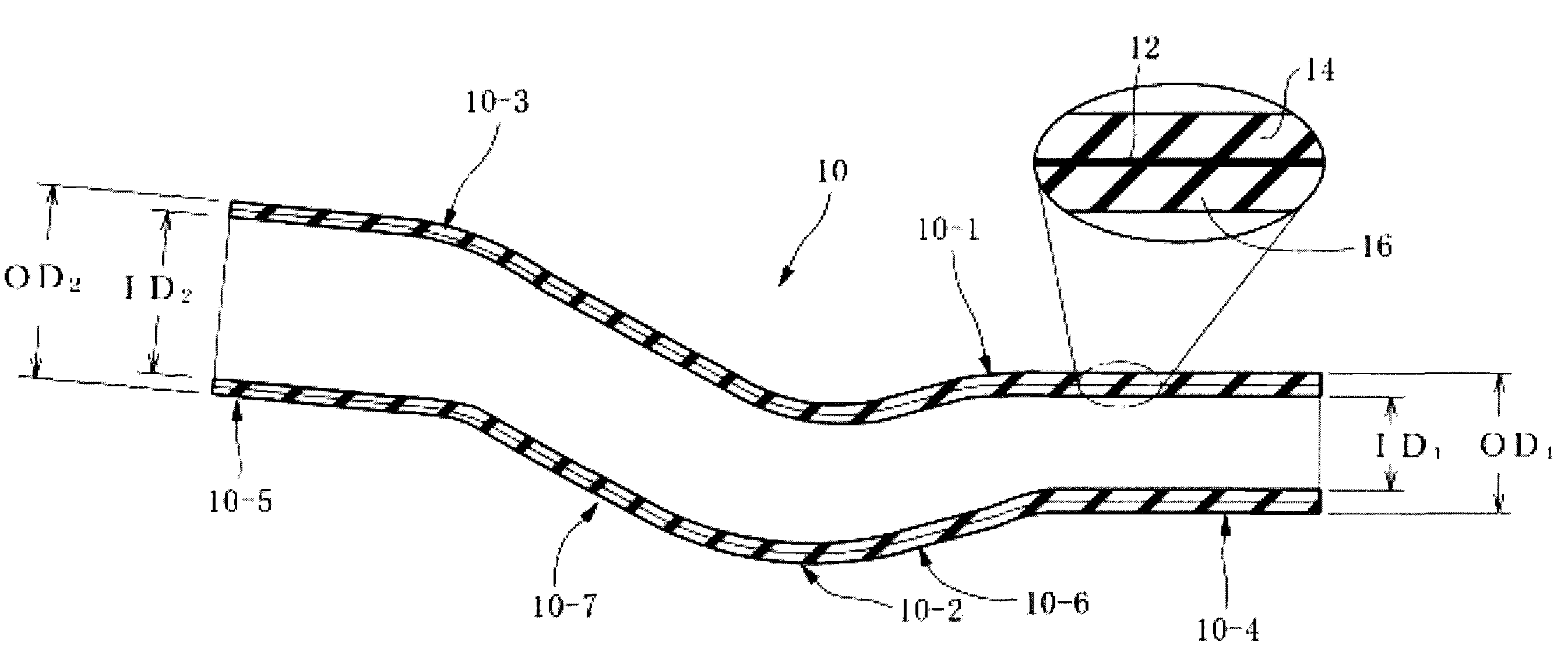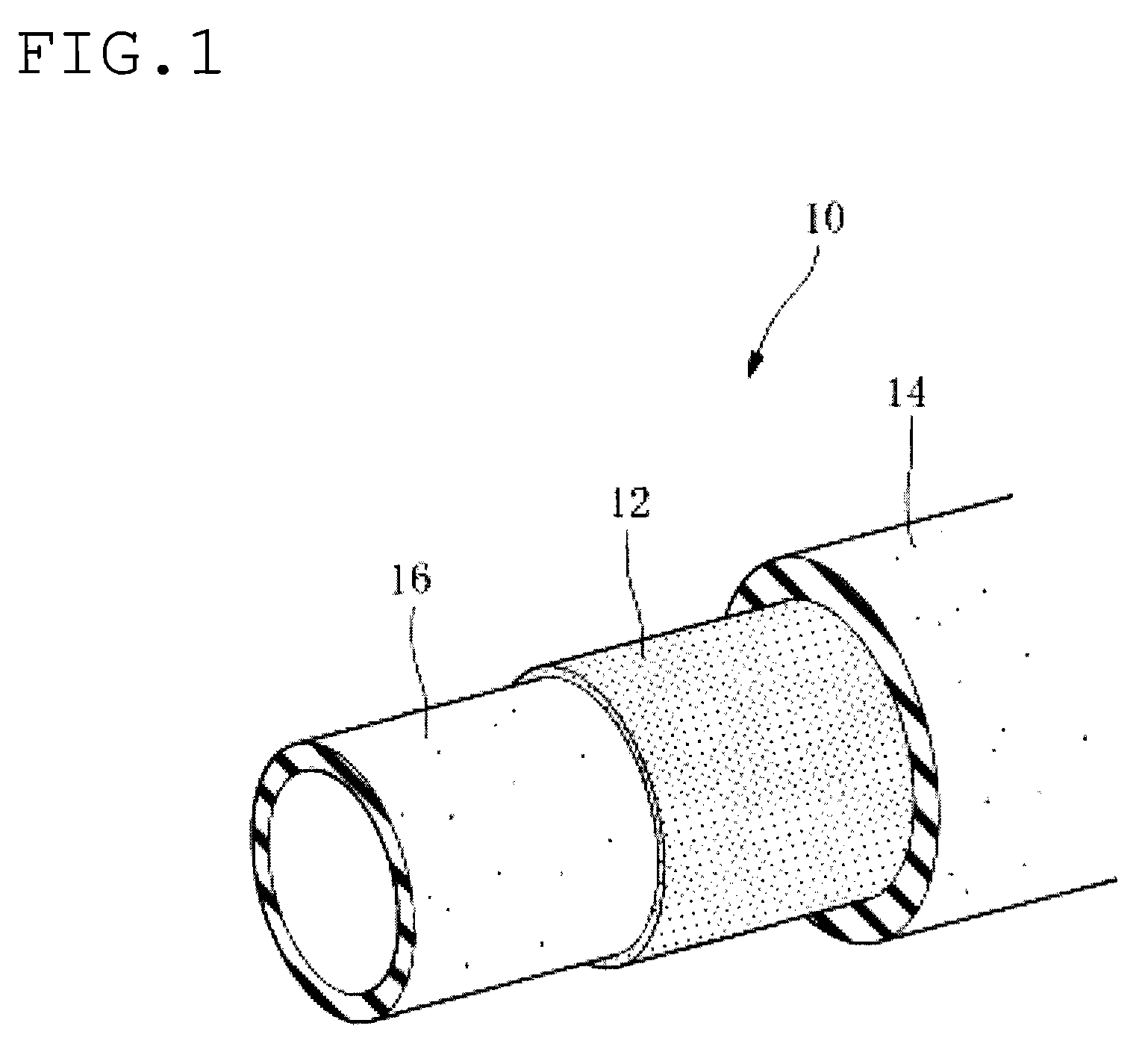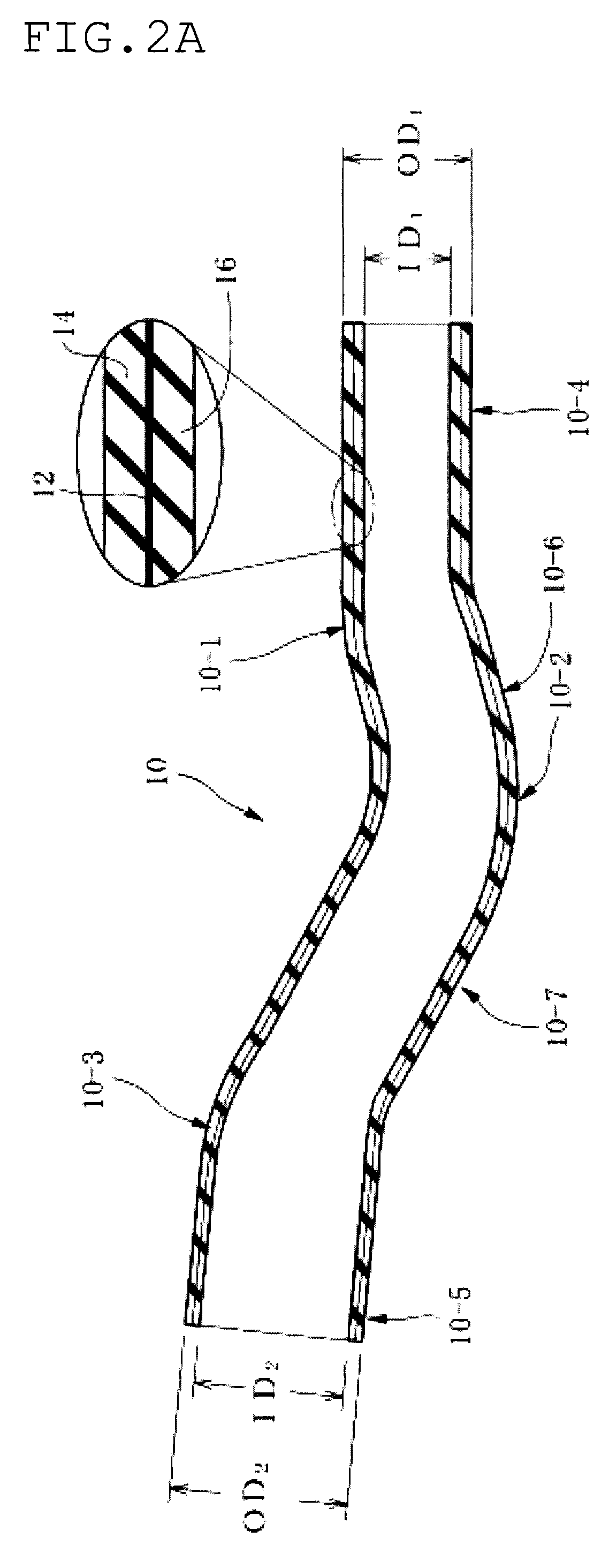Resin composite fuel hose
a composite fuel and hose technology, applied in the direction of synthetic resin layered products, other domestic articles, mechanical instruments, etc., can solve the problems of high pressure, insufficient sealing properties, and hard resin layer as barrier layer, so as to reduce tightening force and reduce sealing pressure , the effect of easy fitting
- Summary
- Abstract
- Description
- Claims
- Application Information
AI Technical Summary
Benefits of technology
Problems solved by technology
Method used
Image
Examples
Embodiment Construction
[0068]In FIGS. 1 and 2, reference numeral 10 indicates a fuel hose or fuel transporting hose (filler hose, hereinafter simply referred to as a hose) for transporting a fuel injected in a fuel inlet to a fuel tank in a motor vehicle. The hose 10 has multilayer construction comprising a resin layer 12 as a barrier layer having a permeation resistance to a transported fluid, an outer rubber layer 14 on an outer side of the resin layer 12, and an inner rubber layer 16 as an inner surface layer on an inner side of the resin layer 12.
[0069]Here, the resin layer 12 in the middle of the layers is formed to extend from one axial end to the other axial end of the hose, or to extend from one axial edge portion to the other axial edge portion thereof.
[0070]The hose 10 entirely has a curved or bent shape.
[0071]Specifically, the hose 10 has curved portions 10-1, 10-2 and 10-3 at predetermined axial positions of the hose 10. And, the hose 10 has straight portions or straight tubular portions (port...
PUM
| Property | Measurement | Unit |
|---|---|---|
| elongation | aaaaa | aaaaa |
| permanent elongation rate | aaaaa | aaaaa |
| elongation | aaaaa | aaaaa |
Abstract
Description
Claims
Application Information
 Login to View More
Login to View More - R&D
- Intellectual Property
- Life Sciences
- Materials
- Tech Scout
- Unparalleled Data Quality
- Higher Quality Content
- 60% Fewer Hallucinations
Browse by: Latest US Patents, China's latest patents, Technical Efficacy Thesaurus, Application Domain, Technology Topic, Popular Technical Reports.
© 2025 PatSnap. All rights reserved.Legal|Privacy policy|Modern Slavery Act Transparency Statement|Sitemap|About US| Contact US: help@patsnap.com



